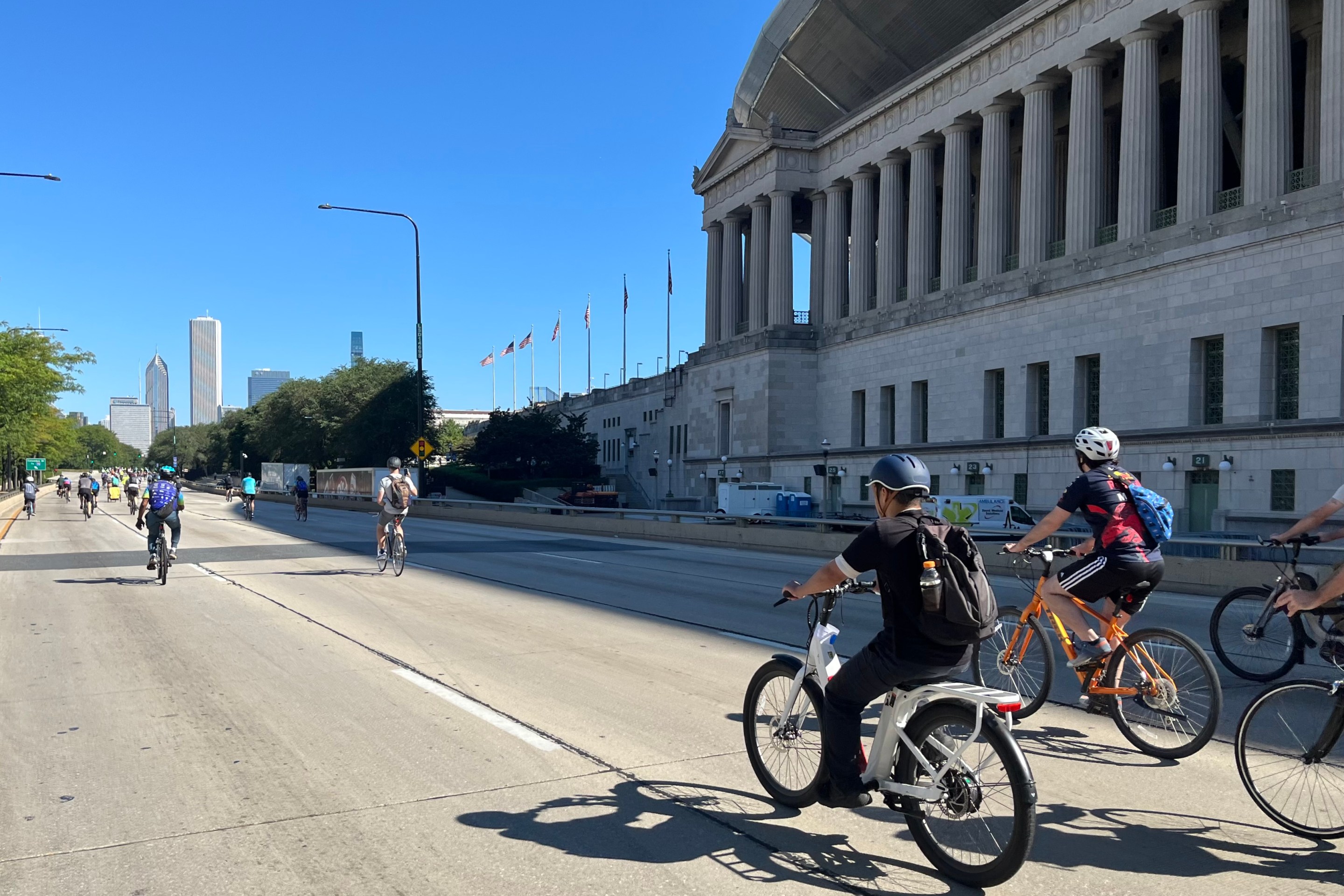
The nation may be driving less, but Illinois road boosters are still determined to build more highways. The problem for Illinois taxpayers is that it may be impossible to construct these new roads without huge subsidies.
Tolls on the proposed Illiana Expressway may be four times as high as tollways elsewhere around Chicago, according to a recent Illinois DOT report. But that price may be so high that the road won't be able to draw enough traffic to cover its costs. Meanwhile, a "funding finding committee" that wants to extend a state highway in Lake County, IL-53, as a toll road, estimates that even with tolls the project has a $2 billion budget hole.
IDOT published an analysis this month that gauges how willing people are to pay certain tolls to drive on the 47-mile Illiana Tollway in rural Will County. The "toll sensitivity" report shows tolls on the Illiana would be 23 cents per mile, almost four times the Illinois Tollway Authority average. This led Greg Hinz at Crain's Chicago to pose the question, "With no toll at all on the nearby I-80, an existing expressway that runs about 10 miles or so north of the proposed Illiana, guess where the trucks are likely to end up?"
According to the IDOT report, 43 percent of potential customers would use another road at this price. The report didn't analyze if the remaining traffic would provide sufficient revenue to pay for the road. If Illiana users can't cover the costs of construction debt and maintenance, all Illinois (and Indiana) taxpayers will be on the hook.
Tollways around the country are heading for default or an infusion of subsidies because drivers are sticking to freeways instead. Illinois seems poised to make the same mistake by building the Illiana.
Aaron Renn, writing at The Urbanophile, thinks the Illiana subsidies won't be easily discernible. Rather, it's going to be a boondoggle that subtly siphons money from what should be higher priorities:
Don't expect any high profile bailouts. Rather, an increased share of the two state’s annual highway fund will have to be diverted to covering the shortfalls, crowding out spending elsewhere. This is one of the big fears in the rest of Chicagoland, where there’s a massive infrastructure investment deficit.
One hundred miles north of the Illiana corridor, road boosters in Lake County are struggling to cover the projected $2 billion shortfall for a 13-mile highway extension of IL-53. The total project cost is $2.56 to $2.87 billion, and tolls can only pay for a fraction of that. The extension is in the GO TO 2040 regional plan, not because it has funding, but because it was thought to be a regionally important project.
It may turn out to be a lousy one. The committee devoted to finding additional funding sources has proposed hefty subsidies, in addition to higher county gas taxes or adding an additional toll collection point to the Tri-State Tollway.
The committee comprises Illinois Tollway staff and Illinois Chamber of Commerce CEO Doug Whitley, among others. At a meeting yesterday they floated ideas including getting adjacent cities to pay for interchanges, or levying higher sales taxes on everyone who makes purchases within a certain distance of the road.
Another idea the committee mentioned was to set up a Tax Increment Finance district that would send property tax revenue generated above current levels to paying down the tollway’s debt. These ideas would mean all of Lake County’s 700,000 residents end up paying for the road, not just the drivers, passengers, and freight haulers using the highway.
The potential toll, according to the Illinois Tollway, would be slightly less than the Illiana but still three times higher than the network average, at 20 cents per mile. It would cover only 17 percent of the construction costs and debt service of the highway extension over 30 years.
In fact, the Center for Neighborhood Technology's analysis of the project's planning and engineering documents that this number is closer to 10-15 percent because of poor accounting and ignoring certain costs. Compare this to CTA and Metra, where a majority of the annual operations are covered by users, at 56 percent and 55 percent, respectively.
Instead of pouring billions into expensive new highways, we need to get more out of our transportation network by tolling existing highways. Implementing congestion pricing – where the toll changes in response to demand – on new and existing lanes is one of CMAP's priorities. Tolling existing roads is difficult because of rules regarding federally-supported highways, but would lead to better performance and more efficiency than any new road could achieve.
Illinois has twenty Congressional representatives. Maybe they should work on changing the federal tolling rules before the state is overrun by unused tollways and pointless road subsidies.





